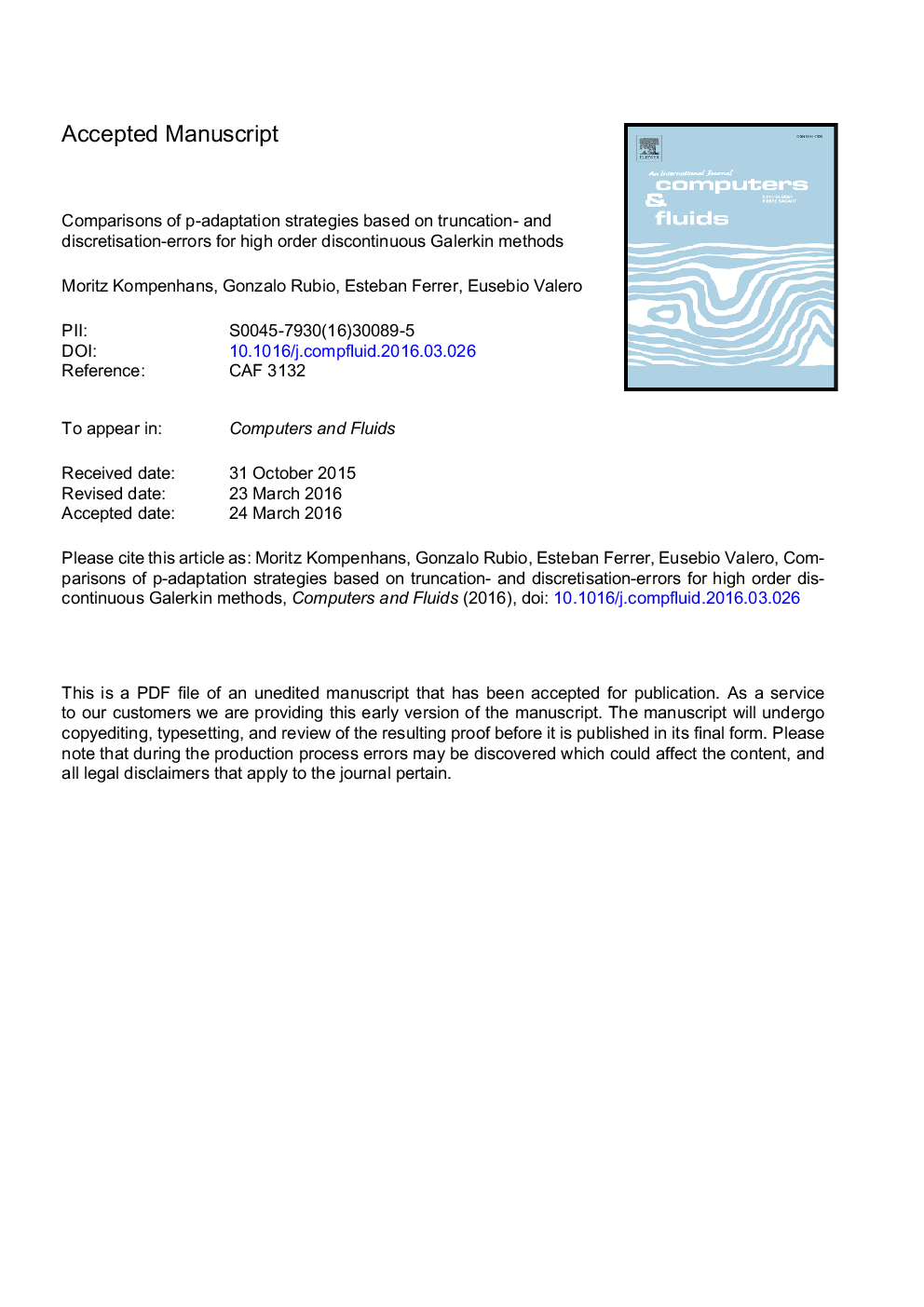| Article ID | Journal | Published Year | Pages | File Type |
|---|---|---|---|---|
| 5012075 | Computers & Fluids | 2016 | 49 Pages |
Abstract
Results include an inviscid NACA0012 and a viscous flat plate boundary layer. Output functionals (e.g., lift, drag) resulting from adapted meshes are compared in terms of the number of degrees of freedom, providing a critical assessment of the performance of each sensor. Namely, it is shown that both truncation error adaptation methodologies provide meshes with polynomial order distributions that lead to fewer degrees of freedom than when using the discretisation error based adaptation. In addition, the examples illustrate the outperforming advantage of anisotropic over isotropic adaptation.
Keywords
Related Topics
Physical Sciences and Engineering
Engineering
Computational Mechanics
Authors
Moritz Kompenhans, Gonzalo Rubio, Esteban Ferrer, Eusebio Valero,
